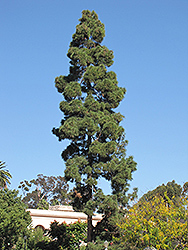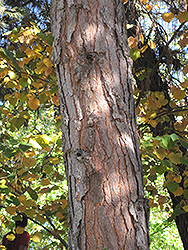It's all about ...
plants

Height: 60 feet
Spread: 40 feet
Sunlight:
![]()
Hardiness Zone: 8b
Description:
A tall, graceful evergreen that becomes more rounded and irregular with age; open and airy branches displaying long, soft needles; excellent for a large landscape
Ornamental Features
Canary Island Pine is primarily valued in the landscape for its ornamental upright and spreading habit of growth. It has rich green evergreen foliage. The large needles remain green throughout the winter. The peeling gray bark is extremely showy and adds significant winter interest.
Landscape Attributes
Canary Island Pine is an open multi-stemmed evergreen tree with an upright spreading habit of growth. Its average texture blends into the landscape, but can be balanced by one or two finer or coarser trees or shrubs for an effective composition.
This is a relatively low maintenance tree. When pruning is necessary, it is recommended to only trim back the new growth of the current season, other than to remove any dieback. It has no significant negative characteristics.
Canary Island Pine is recommended for the following landscape applications;
- Accent
- Shade
- Mass Planting
Planting & Growing
Canary Island Pine will grow to be about 60 feet tall at maturity, with a spread of 40 feet. It has a low canopy with a typical clearance of 4 feet from the ground, and should not be planted underneath power lines. It grows at a medium rate, and under ideal conditions can be expected to live to a ripe old age of 100 years or more; think of this as a heritage tree for future generations!
This tree should only be grown in full sunlight. It prefers dry to average moisture levels with very well-drained soil, and will often die in standing water. It is considered to be drought-tolerant, and thus makes an ideal choice for xeriscaping or the moisture-conserving landscape. It is not particular as to soil type or pH. It is highly tolerant of urban pollution and will even thrive in inner city environments. This species is not originally from North America.
This plant is not reliably hardy in our region, and certain restrictions may apply; contact the store for more information.

